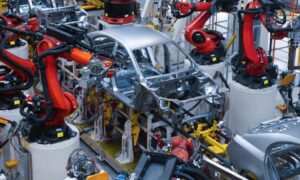An estimated 38,000 deaths occur on the road in the United States every year, according to the Association for Safe International Road Travel. And because of this, car safety features and technologies are constantly being developed to reduce the number of vehicle accidents. New technologies, such as those designed for driver safety, connectivity, and automation of vehicles are currently being produced. Check out the latest car safety technology for improving road safety.
Vehicle Communication Systems
The vehicle-to-vehicle communication system allows the vehicle to communicate with other cars and networks to improve road safety. By sending out information, receiving data, and analyzing them, this technology may help prevent future vehicle incidents. While this technology is in its developmental stage, there may still be technical difficulties in the initial models. However, vehicle communication also includes recording systems.
This will protect drivers in the event of a car accident. It is also important to reach out to a personal injury attorney immediately to prove your case. Consulting a road safety lawyer can give you a better idea on how to pursue a case against the party at fault.
Crash Imminent Braking/Dynamic Brake Support
Several automobile and trucking manufacturers are installing automatic braking systems in their vehicles to prevent and minimize the impact of a collision. The Crash Imminent Braking System (CIBS) applies brake pressure if there is not enough to stop a near collision. This technology will automatically apply brake pressure if the system determines that the driver hasn’t stepped on the brakes during the onset of a possible crash. This way, the damage will be reduced or at least prevent the incident from happening.
Advanced Driver-Monitoring System
Various versions of Driver-Monitoring System are in the works. One example is DriverSense, where a camera analyzes the blink rate and yawning of the driver. If the system senses that the driver is sleepy or starting to doze off, it sends an alert to keep the driver awake. Another example is the Driver Attention Camera system where the camera detects if the driver is paying attention to the road or not by assessing his or her eye movements.
These vehicle safety technologies may change how vehicles and drivers operate in the future. With vehicle-to-everything communication, drivers will be able to determine if there is oncoming traffic if they are planning on turning at a corner. Automatic braking systems and driver-monitoring systems come in handy by preventing collisions from happening and keeping drivers alert while they are behind the wheel.



































